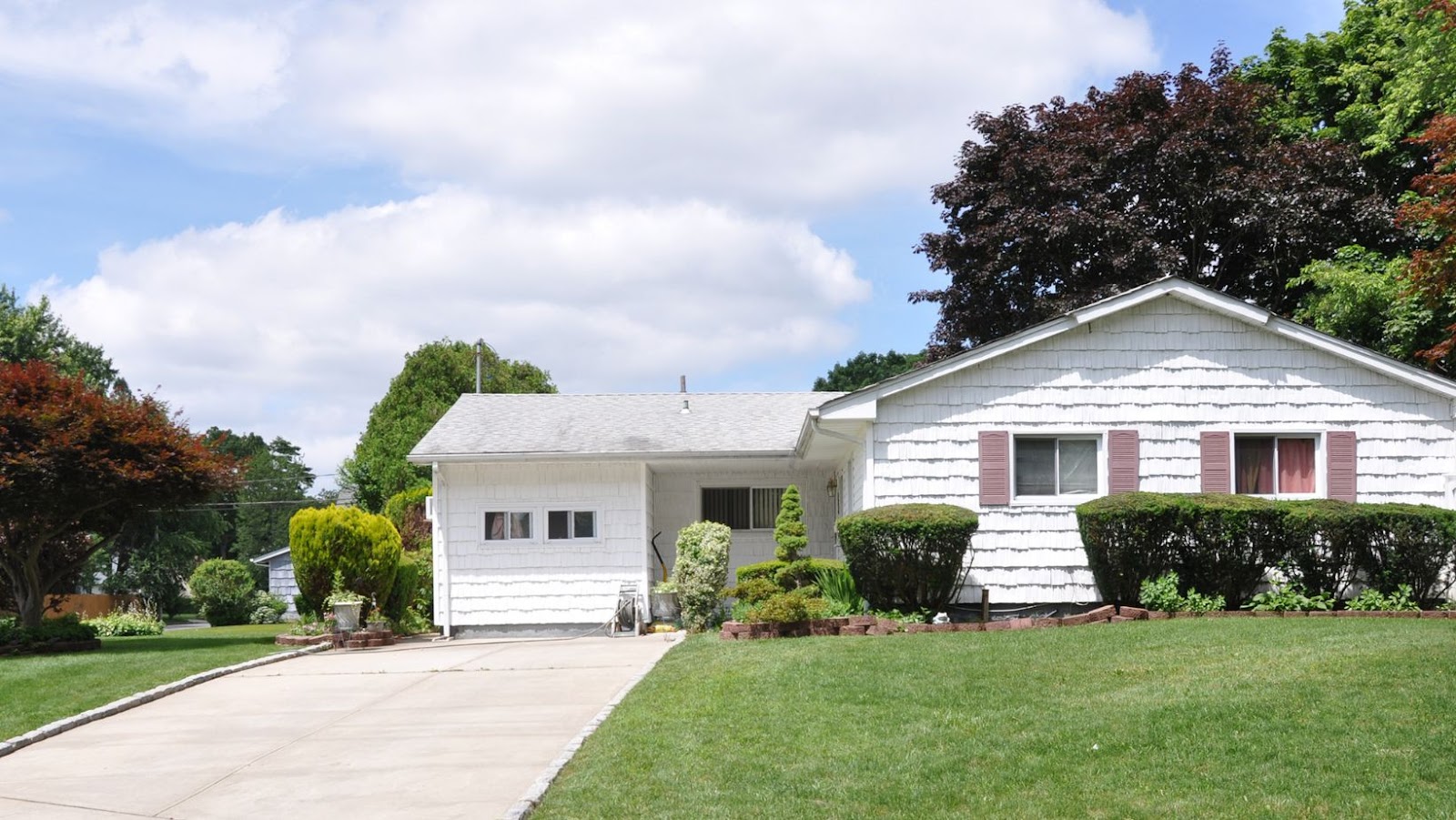
Split level homes are unique in their construction, utilizing one or more full stories along with half stories in order to create various living spaces. The challenge of converting a split level home lies in understanding how these homes are typically constructed and what challenges come with making changes to the home.
This section will explore the structure of split level homes and the available pathways for converting them:
How to convert a split level home
A split level home is a type of house that is built in an elevator-like pattern, with each floor connected by a few steps. It is also sometimes referred to as a Tri-Level home.
This unique design style enables the home to fit into smaller spaces while still creating separate levels for different elements of the home.
Split level homes typically feature an entrance and main level on the bottom, with higher levels up above, such as bedrooms or custom rooms. These homes are great for those looking to maximize their footprint by stacking living space to greater heights and have become increasingly popular in recent years due to their cost saving advantages. They can often be spotted in many new neighborhoods due to their convenience and clever use of space.
By separating different areas of your house into multiple levels, you can enjoy all the benefits of a two story house without having to build out large additions like stairs or corridors. Split level homes feel open yet cozy at the same time and offer lots of personalization opportunities since you can adjust how many levels you want your house to have!
Advantages and disadvantages of a split level home
Split-level homes are a popular style of residential architecture which have become iconic in many neighborhoods. Characterized by two or more half-stories connected at different heights, the split level home gives the appearance of three full stories due to the varying levels. While it has become a sought-after architectural style, it can also be challenging to update this unique floor plan. Understanding the advantages and disadvantages of having a split level home is key when deciding if you should remodel or move.
Advantages:
- Multi-level living: A split level home offers homeowners different living spaces without needing separate rooms for each activity. This helps to create an organic flow between formal and casual areas as well as providing extra space for bedrooms or other amenities.
- Ample natural light: The multiple levels of a split level home allow for abundant windows and larger glass doors that work better with natural light. This provides attractive views and regions that capture maximum casual lighting throughout your home’s daytime hours.
- Livable indoor/outdoor space: A split level plan provides additional outdoor living opportunities not found in traditional ranch homes or single floor dwellings. These balcony patios make use of the different levels and give your home an open feel without compromising privacy from neighbors or sacrificing interior space.
- Affordable renovations: Split level homes provide plenty of room for cosmetic renovations due to its multi-level construction, but these projects are often less expensive than two-story options due to the limited size of reconstruction needed on each particular story or half story section in addition to not needing stairways built when renovating most rooms on this type of floor pan.
- Enhanced security: Split Level Homes provide homeowners with an additional layer of security from intruders which might enter via a staircase located on any particular floor when compared with single story homes where all activity takes place on one singular plain mainly composed by entry doors located on the main floor instead breaking up into multiple access points such as balconies through each individual stairwell leading up or down between floors found on this type of property layout such as those seen regularly in Split Level Floor Plans.

Disadvantages:
- Limited storage space in some locations: Due to its design constraints, storage can be limited within certain areas located within this type of residential construction, so potential buyers must factor this into their decisions when purchasing these types of houses as well as think ahead during potential remodeling projects related towards this restriction prior beginning any sort primary constructions jobs related towards adding more rooms inside their property residence;
- Lackluster design appeal out front: The distinct feature that defines Split Level Homes – its many angle divisions – may seem appealing from certain angles; however from the street it may look disjointed and cluttered which could influence value if selling soon due negative curb appeal factors. In addition, kitchens located upstairs (unless noted otherwise) rarely appear appealing from street view point being visible only through small top house windows leaving onlookers wondering what might lie beyond them rather receiving true impression about entire interior area construction as usually would be case for traditional one story residences where complete kitchen counter appearance was potentially visible right at that front entrance even outside house possibilities;
- Noisy passages between floors: Split Level Homes – since they become distinguished mainly by several stairwells most commonly found internally between different floors inside those houses – tend end gathering dust circulation noise which normally rises up between lower higher based complex plans while same time HVAC systems tend get loud noises across same concept causing general disturbance heard all along therefore making relatively necessary upgrading isolated soundproofing cornering techniques among others inside residence order manage noise levels effectively reduce further complications caused propagation disturbance outside globally owned property buildings themselves.
Challenges of Converting a Split Level Home
Converting a split level home can be a challenging process and requires careful consideration of the home’s layout and design. Splitting a single level lots into two can be difficult if the existing design is not well planned out. Moreover, once the split level home is created it must be done in a way that maximizes the new space and creates an inviting area.
In this article, we will look at some of the challenges of converting a split level home:
Structural Considerations
When it comes to converting a split level home, one of the most important considerations is the structure of the house. As its title implies, a split level home has two or more levels that will need to be modified in order to achieve a more unified look. This can be difficult to do if the structure has not been designed with conversion in mind.
This usually requires removing interior walls and/or adding support beams in order to create a single living space. This is an intricate process and will require an experienced contractor that deals exclusively with structural design and remodels.
Other considerations involve adjusting:
- piping,
- electrical wiring,
- windows,
- and air conditioning/ventilation systems
for proper airflow through the new open residence layout. If not installed properly these modifications can lead to costly repairs later on down the line.
This type of project also requires extra documents such as permits and building plans approved by local government officials prior to any actual construction work beginning. Taking into account all these components make sure you have sufficient funds and resources before jumping into this big project!
Building Regulations and Planning Permits
Converting a split level home to another use can be a costly and complex undertaking. The most successful conversion projects honor the architectural style of the residence, incorporate modern comforts, and meet all building regulations. Before beginning any conversion project, homeowners must ensure their plans comply with local and state building codes, which may include obtaining a valid planning permit from local municipal authorities.
Building codes can require the installation of additional firewalls or stairwells for extra safety, as well as proper ventilation for the basement level. Most jurisdictions also set noise restrictions to protect neighbors from additional noise when an upper floor is being converted into habitable or rented space. Following electrical and plumbing codes is also important as these systems must be up to current safety standards in order to obtain permission to occupy the converted residence.
Though creating plans that meet all legal requirements can be daunting, it is essential in ensuring the safety of occupants while maximizing usable living space within a split-level home’s limited square footage. Consulting with a licensed contractor familiar with current zoning requirements and design modifications will help ensure that your conversion plans comply with local regulations while creating the perfect new home for you or your tenants.
Cost Considerations
When it comes to converting a split level home to a single level living area, there are several cost considerations which must be taken into account. Depending on the size of the project and its complexity, costs can range from minor repair and maintenance tasks to full-scale renovations.
One of the major cost considerations is whether or not you are able to do any landscape changes necessary for accommodating an open plan area. You may need to remove or alter existing landscaping features in order to create a level surface and make room for windows, doors, staircases etc. The bigger the scale of your vision for the project, the more expensive this is likely to be.
The structure of your existing building can also affect costs; if walls need to be relocated or knocked through in order to create an open plan space then additional costs will apply here too. Similarly, if you want to add extra square footage by extending into any available space such as garages and outbuildings, then you should factor in additional costs for building materials as well as construction fees.
You may also have some electrical and plumbing requirements which will need budgeting for; it’s important that before starting your conversion project you get estimates from experienced professionals so that you know what sort of money you’ll need up front in order to complete it successfully.
Solutions to Converting a Split Level Home
Converting a split level home can be a difficult challenge for many reasons. Airing out the steeply angled rooflines, dividing the levels, and working around existing plumbing and electrical systems can present a variety of obstacles. Despite the complexity, it is possible to modify a split level house in a way that complements architectural style while making the most of the space.
In this section, we will look at the various solutions that can be employed to convert a split level home:
Working with an Architect
When considering how to convert a split level home, you should strongly consider hiring an experienced architect. An architect can provide invaluable advice on how to create the most efficient design and layout for your new space.
During the design process, your architect will carefully consider the unique issues of a split-level home. These include room height changes and moving walls or structures up or down. Your architect will help make sure that all adjustments are done safely, properly and with consideration for future resale value of your home.
In addition to creating a plan for converting your split level home, your architect may be able to help you find materials at reasonable costs and hook you up with contractors who can do the work for a reasonable price. This is especially helpful when doing large-scale remodeling jobs on a tight budget.
Working with an architect can help you get the most out of your conversion project while staying within your planned budget. Taking the time up front to explore ideas through architectural drawings can save you time and money in corrections down the road by preventing mistakes that result from improper planning or not being fully aware of building codes in advance.

Working with a Builder
When it comes to converting a split level home, one of the most important considerations is finding the right builder. An experienced contractor will be able to provide you with the best advice on how to achieve your goals without wasting time and money.
To choose a good contractor, you should begin by doing some research and talking to people who have completed similar projects in the past. Make sure that you tell them exactly what your plans are so that they can give you realistic estimates for time and cost. Additionally, ask for references from previous customers and check their feedbacks online.
Once you’ve narrowed down your options, contact three or four contractors for in-person consultations. Ask them about their experience with split level homes, what materials they recommend for your project, and if they’re willing to provide a detailed proposal outlining labor costs and timelines for completion. Be sure to have each proposal evaluated by an independent professional before signing any contracts – this way, you can be confident that all quoted costs are accurate and fair.
Working with a Structural Engineer
Regardless of the size or scope of your project, it’s important to consult a structural engineer before beginning your conversion. He or she will evaluate the existing structure, identify potential weaknesses that must be addressed, and design solutions for any structural deficiencies found during the inspection. In addition to supporting the existing structure, a structural engineer can also suggest extra reinforcement measures that may come in handy down the road.
After scoping out all necessary improvements and reinforcements, you’ll need to work together with them to create a construction plan that meets all building codes and safety regulations. The plan should identify all potential areas of weakness such as increased support in order for any load bearing walls or existing beams.
The completed plan is an invaluable resource for contractors who may need guidance during the project timeline. Additionally, having a well thought out plan can keep costs and materials under control throughout construction by helping plan appropriate materials use and mitigation strategies along with both short-term and long-term building maintenance plans, including:
- Identifying potential areas of weakness
- Planning appropriate materials use
- Creating mitigation strategies
- Developing short-term and long-term building maintenance plans
Conclusion
Converting a split level home into a single level house can be a difficult task, but with the right planning and design, it is possible to make it a reality. It is important to consider the existing structure of the home, current codes and regulations, and the cost of the project before taking it on. With careful planning and the right team of professionals, a split level home can be converted into a single level house.
Summary of Challenges and Solutions
Converting a split level home is a complex process that involves many challenges. Working with an experienced contractor is important to ensure the project goes as smoothly as possible.
One challenge of converting a split level home is the size, orientation and design of the space itself. To make this conversion successful, one has to consider how much space will be devoted to each floor, how many levels need to be connected and what types of materials will be used for construction.
The budget for the project can also become an issue as split-level homes involve intricate work that could increase material costs considerably. A professional contractor should be able help you find cost-effective solutions and keep your budget in check.
Another challenge associated with converting a split-level home is creating an aesthetically appealing design that complements both existing architecture and interior decor while still creating new living spaces or interesting features such as a library ladder or steel staircase. Getting creative with lighting or materials such as marble cladding can help lighten up the area while still keeping it functional and comfortable.
Finally, workers must take extra precaution when working with older homes due to safety concerns related to lead paint exposure or deteriorated foundations. Professional contractors should have adequate certifications and experience in dealing with issues like these as they have dealt with similar challenges before in past projects. Taking these necessary steps ensures that everyone involved should remain safe throughout the entirety of the project.
Final Thoughts
At the end of the day, converting a split level home is a daunting task that takes a great deal of preparation. Knowing the goals for the conversion and having realistic expectations about what can be achieved will help make sure that you get a successful outcome. Working with contractors and designers who have experience in remodeling is also essential to completing this type of project in an efficient and cost-effective manner.
Before beginning any renovations, it’s important to discuss your plans with local building departments to ensure compliance with all applicable laws and codes. Researching design options that work best for your family’s needs can also help make the conversion more successful.
With careful planning and thoughtful execution, transforming your split level into a more open concept living area can be an exciting process with lasting rewards!





